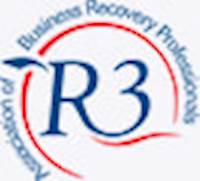A Creditors’ Voluntary Liquidation (‘CVL’) is a commonly-used procedure for closing an insolvent company.
There are a number of common business circumstances that can lead to its use and here we explore the “typical reasons for a Creditors Voluntary Liquidation (CVL)”.
Insolvency
A company entering into a CVL will be insolvent. This can be because either:
- The company is unable to pay its debts at the time they are due for payment
- Liabilities are greater than assets
For an insolvent company, a CVL is often appropriate.

Triggers for a creditors voluntary liquidation.
Reasons for using a CVL
Some of the common CVL triggers are:
1) Desire to prevent further trading losses
At the commencement of a CVL the company ceases trading. This protects the company from incurring even greater trading losses. It also shows a director to be prudent and responsible in mitigating further losses.
2) Stops creditor threat of legal action
Legal action by creditors is halted by a CVL. Also, directors and employees are relieved of the need to liaise with creditors. Instead, this responsibility is transferred to the insolvency practitioner.
3) Assets buy back and restarting a business
A company director may be interested in buying assets from a CVL company, via the liquidator. Assets would normally be valued by an independent third party.
This would be where directors have belief in a business plan to resurrect the business, in a viable form. This may be because there is access to new funds. There may be a desire to save jobs of employees.
This approach may mean assets are sold at a higher price and therefore provides some money to creditors.
An alternative may be a prepack administration, which is a speedy way of starting a new company through acquiring the business and assets of the insolvent company. Speak to us at Greenfield on (0121) 201 1720 about how a prepack administration might be appropriate for you.
4) Desire to avoid a compulsory liquidation
Being forced into a court liquidation is not an outcome that most directors would want. By pursuing a CVL as an alternative compulsory liquidation (Winding up Petition - WUP) can often be avoided and:
- The director instructs the preferred insolvency practitioner – rather than being allocated to an Official Receiver’s office via the courts
- A WUP is usually forced upon company directors who have no control over the process and the timescales. Opting for a CVL gives control over timescales, in conjunction with the insolvency practitioner
Possible Effects of a CVL
1) Leases and finance agreements are cancelled
Property leases and equipment leases for example, are terminated. This means arrears and future payments are cancelled. If assets are required as part of a new start-up then these potentially could be refinanced.
2) Directors redundancy claims
A Creditors’ Voluntary Liquidation process usually enables redundancy entitlements to be paid out to directors. Also there may be a claim for accrued holiday pay, unpaid wages and notice pay.
A director’s redundancy claim can be used to fund a CVL, whilst often leaving money over for other uses. There are eligibility criteria, which are detailed in our article “Dissolving? Are you losing out on your directors redundancy claim?”
Contact Greenfield Recovery
As a fully licensed Insolvency Practice, Greenfield Recovery is well placed to advise and consult on all matters relating to the Creditors Voluntary Liquidation process and the wider topics of company restructuring and insolvency. Speak to our professional team today (0121) 201 1720 or by completing our contact form below.



